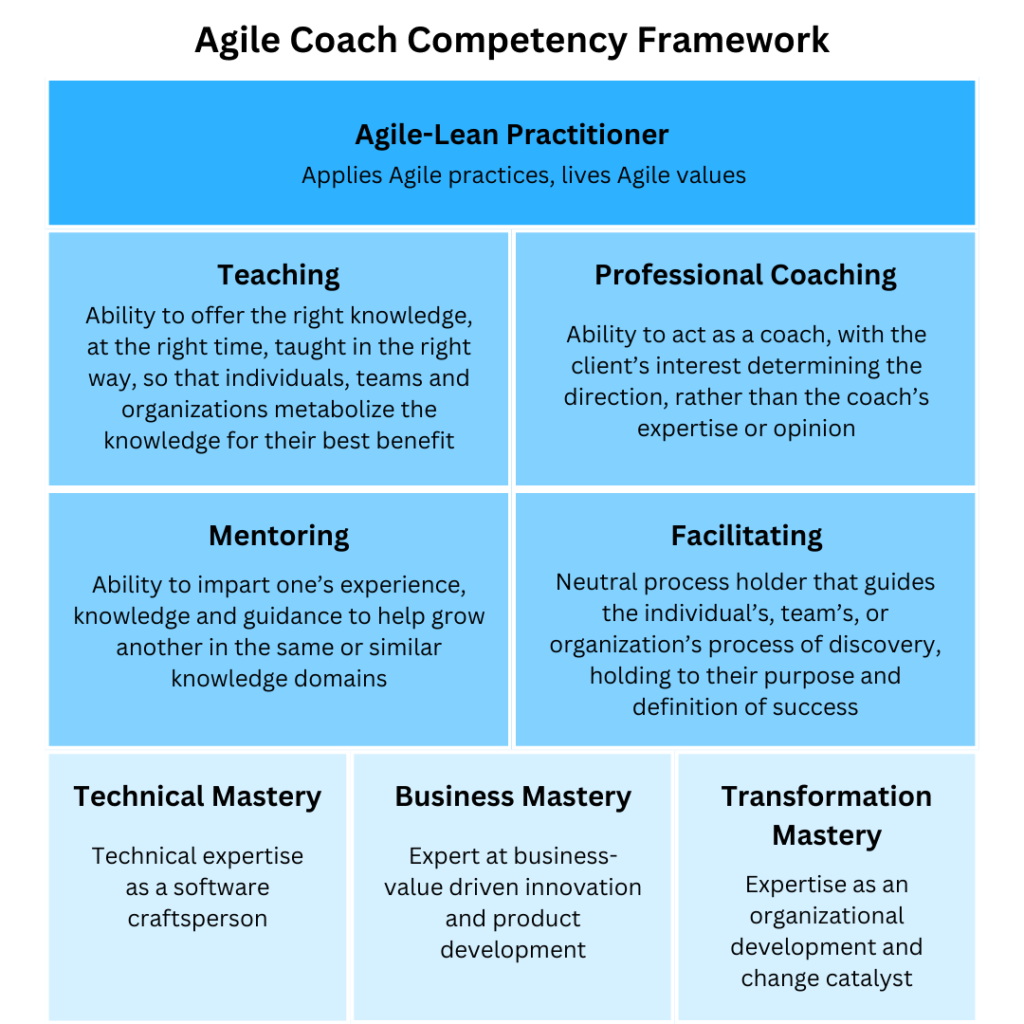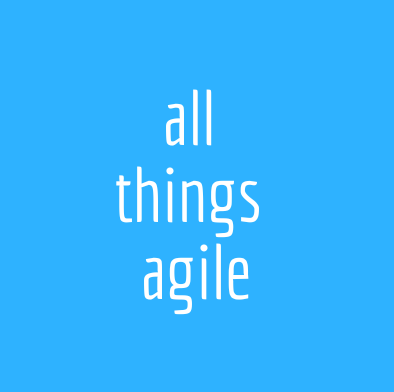
Agile coaches. You’ve probably seen them in action, with post-its and dry eraser in their hands, talking to everybody in the organization no matter their role, running retrospectives, facilitating big quarterly planning sessions, etc.
Maybe you are one yourself! Hi there my fellow peer. Or maybe you are curious about what agile coaches do, whether because you consider hiring one or… maybe becoming one?
Whatever the origin for your curiosity, while the nomenclature and role Agile Coach seems widely used, let’s pause for a moment and ponder the more important question behind it all: What is agile coaching exactly? And why should you care about it, if at all?
If you want a shorter video explanation, you can watch it here from my YouTube channel @Allthingsagile.
So, whether you’re looking into gathering better info to defend your title as an agile coach, convince your boss to bring one into the fold, or simply sharpen your skills without claiming the title, this post is for you.
Let’s begin with the obvious.
A simple definition of agile coaching
Agile coaching is the confluence where the iterative, flexible nature of agile methodologies meets the personalized, growth-oriented approach of professional coaching.
This powerful combination enables organizations to foster environments where continuous improvement is not just an ideal, but a practical reality. Agile coaching equips teams with the tools to navigate complicated and complex situations, cope with or even thrive in change, and focus on value delivery, all while supporting individual team members in their professional journeys.
When done effectively, agile coaching’s holistic impact not only drives project success but also cultivates a culture of resilience, learning, and adaptability — key traits for thriving in today’s fast-paced business world.
It mixes agile and coaching
At its core agile coaching offers an intersection of two powerful disciplines or set of skills: agile and coaching. It does so to help individuals, teams, even departments and whole organizations deal with issues of adaptability and performance in a market that is facing constant change.
The agile part
If you are unaware of agile you probably have been living under a rock!
OK, let me try again, if you don’t feel sure about agile, I’ve written a few words on what agile is and what problems it solves in a past blog post, but here’s my definition of agile:
Agile is an approach that guides organizations in executing work efficiently and effectively. Agile emphasizes the importance of working on the right things, maintaining an optimal pace, and utilizing resources wisely, being ready for change at any moment. In other words, Agile proposes that you work effectively, intelligently, and adaptively.
The coaching part
Professional coaching has a rich history dating back to the 1970s, initially developed as a robust toolkit to support organizational leaders. These individuals often navigated complex decisions with limited information, amidst a landscape filled with risks, changes, and high stakes. Coaching provided a means for enhancing resilience and elevating performance, even in the face of intense pressure.
As time progressed, coaching extended beyond the executive suite. For one, because its efficacy as a method for personal and professional growth led to a broader adoption. And second, because the very challenges that once exclusively pertained to leaders began to affect a wider range of roles within organizations. Today, nearly everyone across various industries encounters a degree of pressure to adapt quickly and effectively.
Through coaching, individuals and teams get to explore non-obvious possibilities for themselves, and by using patterns of agility, people started to transform their ways of working to obtain better results.
If agile means designing better systems in organizations and teams, coaching allows people to adopt more productive behaviors and change their mindset.
Great, now how did it all start?
Where does agile coaching come from?
We had scrum masters and agile trainers before, so why this new role or set of skills?
I can tell you having been a scrum master myself, scrum was different. And while a useful framework, the problem in adopting agile had little to do with steps and frameworks and more to do with the conversations to be had and how to have them. Understanding what makes a great coach and facilitator was definitely what shifted things for me since 2014 and how I finally went from an average frustrated scrum master to an effective change catalyst.
The term agile coaching coined by Lyssa Adkins in her decade old book Coaching Agile Teams, of which I made a review a few years back.
Lyssa and Michael Spayd created the Agile Coaching institute and were the pioneers of suggesting the competencies agile coaches should possess in their Agile Competency Framework. It was the first time a set of skills was laid out to organize what is necessary in helping others adopt change at this level.

Many more initiatives were created after that, expanding the notion of what is agile coaching, including the 8 stances of Scrum masters, now is revisited into 6 stances, and the Agile Coaching Growth wheel, which is a fantastic resource that I believe is inspired by the Leadership Circle ™ approach to growth and mastery.

Keep agile coaching simple and effective
That being said, I believe simple is always best! While it’s possible to spend a long time defining a very specific set of stances for coaches and fine tune the details of each skill, I believe the original framework is already very telling and is all you need to situate yourself. And I say this as someone who has both coached thousands of people in getting this “agile thing” to work for them and in coaching hundreds of other agile coaches and change agents using the original competency framework.
Whatever the tool you use, effective agile coaching allows teams and organizations to:
- Learn and adopt new behaviors, see beyond the obvious, and have productive conversations (mentoring, teaching, facilitating, and coaching).
- Design and modify organizational systems, structures and processes for better products, better decision-making, and better ways of working (agile expertise).
- Generate great products and services by acting on problems worth solving, and why not innovate in their industry (business mastery).
- Develop and adapt effective development practices that allows for the technology you use in your product to hold quality, and speed as capabilities, and your teams to be guided by excellence (technical mastery).
- Gain resilience and adaptability in the face of change, big or small, planned or sudden.
With that in mind, I always find it’s best for each agile coach or change leader to fill in the blanks in this competency framework with their specific competencies and strengths, because you will always calibrate a bit differently depending on your industry, organization, and your own appetite and focus, so long as you respect the overarching idea. Your technical and business mastery in the Health Care field or Aviation will look different than for those operating in Marketing or in Software Development spaces.
Still, any agile coaching that takes place should generate the results I mentioned above.
Not easy, true. Yet, if you look at it, the agile coaching framework is simple to understand.
Agile coaching in action
What does agile coaching look like in practice? I will not talk about the day-to-day activities, which are mostly conversing individually or in a group, giving training, designing workshops, and helping people communicate. If you want to read about a day in the life of an agile coach you can read my accounts here and here.
Let’s go beyond. What are some of the common themes agile coaching addresses? What problems does it solve?
Without drawing an extensive list, here are some typical agile coaching interventions:
- Facilitating productive conversations. Teams and their managers and stakeholders need to find leverage for agreement and commitment, as well as negotiate often. Great agile coaching interventions create spaces where these are held without emotional and reputational damage on individuals.
- Facilitating big conversations. Whether it’s some sort of quarterly planning, department retrospectives or any event requiring the participation of hundreds of people at once, so long as all voices need to be heard and accounted for in an effective manner. Sometimes the size is not in the number in the group, but in the impact it takes, such as helping a team of executives decide on a pivoting strategy.
- Developing teams. Starting and resetting teams toward success and healthy dynamics, helping teams redefine and achieve what they consider to be an adequate level of performance.
- Enhancing technical practices. Working with development teams to adopt and refine technical practices for constant betterment of quality and pace both for the product and the processes.
- Navigating conflict: mediating conflict resolution by providing a neutral space for dialogue among people, employing active listening, and guiding parties towards mutual understanding and collaborative solutions.
- Coaching leadership layers: one-on-one and even group coaching to executives and managers, helping understand, develop, and select alternative styles of leadership that are aligned with a more adaptive and agile organization.
- Making the change transparent. The why, the what, the how and when of change is sometimes split across groups and visibility of the united from is minimal. Agile coaching done right implements mechanisms to paint and follow the unified picture for the change, even if it started disconnected.
- Co-designing experiments. In all sorts of organizational change there is a balance between ideas and techniques that can be used “as-is”, and customization to the context and culture of where it’s applied. Sometimes entirely new ideas are developed and there is such a thing as effective ways of introducing change via experimentation, instead of a big-bang adoption.
Now, to the final question I believe you are asking yourself.
Agile coaching or agile coach?
Agile coaching is a set of disciplines or skills one uses to help individuals and groups to orient themselves using agile thinking and practices to respond to change.
Incidentally, people who use those skills tend to be called agile coaches, many are hired as such. Unsurprisingly though, many agile change makers are managers, change managers, product managers, directors, team leaders, producers, etc.
Not everybody conducting, propelling, and making a push for agile change is an agile coach in title. But you can indeed argue and make a case that they are, indeed, agile coaches.
I don’t believe you should care much for the title, but I do believe this is a set of skills that can transform your career due to the power these abilities can carry from everyday to high-stakes situations.
To be honest, since late 2023 organizations seem to be increasingly questioning the value of agile coaches, scrum masters, and similar “agile branded” roles. Well, questioning the roles they may be. Yet, their need for organizational adaptability, flexibility, aka agility, is stronger than I’ve ever seen before.
With agility becoming an inescapable skill and coaching a highly transformative competency, getting your hands dirty on agile coaching at some capacity is in your future. To know a bit more about that, take a read in another post here.
I hope agile coaching is now clear to you. I first started my Agile Coaching program to help enable effective, professional individuals to operate in the agile coaching and leadership space, outside the bubble of agile frameworks.
Get certified as an agile coach in a simple and supported way! Our highly engaging courses follow the best practices of adult learning, offer the quality accreditation of ICAgile, and our trainers are professional agile coaches themselves, with years of experience in the trenches.



